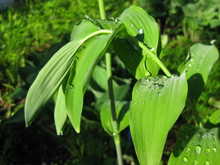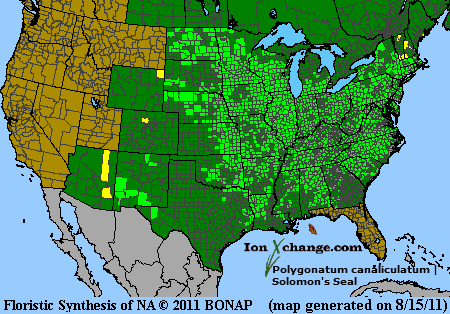 Loading... Please wait...
Loading... Please wait...- Home
- SEEDS
- SEED MIXES
- BUY PLANTS
- Info Request
-
Educational Videos
- Greenhouse Transplanting Demonstration
- Native Seed Cleaning demonstration at Ion Exchange Native Seed and Plant Nursery
- Attracting Butterflies
- Bidens - Bidens cernua Harvest Video
- Big Blue Stem Harvest
- Butterfly Milkweed Video
- Button Blazingstar - Liatris aspera Video
- Buttonbush - Cephalanthus occidentalis Video
- Canada Anemone - Anemone canadensis Harvest Video
- Cardinal Flower - Lobelia cardinalis Video
- Control Burn - Wildflower Field
- Cream Gentian - Gentiana flavida
- Culver's Root - Veronicastrum virginicum Video
- Cup Plant - Silphium perfoliatum Video
- Dormant Seeding | Planting
- Earthyman's Favorite Wildflowers Video
- Eco-Friendly Golf Course Seed Mix
- Floating Islands
- Fringed Loosestrife - Lysimachia ciliata Video
- Giant Yellow Hyssop - Agastache nepetoides Video
- Indiangrass - Sorghastrum nutans Video
- Iowa Prairie Partner Program
- Leadplant - Amorpha canescens (Potted) Video
- Meadow Blazingstar - Liatris ligulistylis
- Midland Shooting Stars - Dodecatheon meadii Video
- Native Plant Nursery Field Irrigation Experiment
- Nodding Onion - Allium cernuum Video
- Ohio spiderwort - Tradescantia ohiensis Video
- Old Man's Beard - Clematis virginiana blooms Video
- Oxeye Sunflower - Heliopsis helianthoides Video
- Prairie Spiderwort - Tradescantia bracteata
- Purple Coneflower - Echinacea purpurea Video
- Rain Garden or Water Garden Video
- Rattlesnake Master - Eryngium yuccifolium Video
- Riverbank Stabilization - Wetland Plants
- Rose Mallow - Hibiscus militaris Video
- Rosinweed - Silphium integrifolium Video
- Royal Catchfly - Silene regia
- Showy Tick Trefoil - Desmodium canadense Video
- Sneezeweed - Helenium autumnale Video
- Swamp Betony - Pedicularis lanceolata Video
- Swamp Milkweed - Asclepias incarnata Video
- Sweet Blackeyed Susan - Rudbeckia subtomentosa Video
- Tall Coreopsis - Coreopsis tripteris Video
- Urban Butterfly Garden
- Wild Bergamot - Monarda fistulosa Video
- Wild Geranium - Geranium maculatum Harvest
- Wild Goldenglow - Rudbeckia lanciniata Video
- Wild Petunia - Ruellia humilis Harvest Video
- Woodland Knotweed - Polygonum virginianum Video
- Yellow Coneflower - Ratibida pinnata Video
- Blog
- Resources
- Policies
Contact Us
Phone:
563-419-0837
or 563-535-7231
Email:
hbright@ionXchange.com
Browse Products
Add to Wish List
You Recently Viewed...
Our Newsletter
Product Description
"Solomon's Seal, Conquer John, Sealwort"
Polygonatum comes from the Greek word meaning "with many knees". This is most likely in reference to the bulbous, jointed rhizomes. Canaliculatum comes from the Latin for "channeled" or "with a long groove". Some botanists and taxonomists divide this particular plant into three different species - P. canaliculatum, P. biflora and P. communtatum. The differences are difficult to tell without magnification..
The common name, Solomon's seal derives from its rootstock that bears flat round scars which resemble the impression of a seal. Biblical King Solomon's famous seal was a magical signet ring. A transverse cut on the root was once believed to reveal Hebrew characters left by King Solomon's seal.
Since each year of growth leaves a new "seal" on the rhizome, you can estimate the age of a Solomon's seal plant by counting the scars.
| Sun Exposure | Prairie, Savanna, Woodland |
| Soil Moisture | Mesic, Dry Mesic |
| Bloom Time |
Summer May, June |
| Bloom Color | Green |
| Max Height | 4 feet |
| Wetland Code | FACU |
| Germ Code | L,E |
| Seeds Per Ounce | 800 |
Even though the stems can easily reach 6 feet in length, the plant itself is generally 3 feet or less in height with the stems making long, sweeping arches. It's found on rich woodland soils and occasionally in the open areas of cleared woodlands. It prefers cool moist soil but tolerates dry or damp once established. Green-white to white flowers bloom beneath the leaves from May through June. It is a rugged, deer resistant plant largely unbothered by disease.
The roots, berries and young shoots were once used a sources for food. The Iroquois actually cultivated Solomon's Seal to use the roots for a dietary staple. The Chippewa believed ingesting the roots would aid in curing back pain and/or kidney problems. In order to achieve its full effect, they believed the medicinal rootstock needed to be saved in a pouch made of bear's paws. The Meskwaki and Potawatami would place a small piece of root on burning coals to create fumes that could revive one from an unconcsious state. Early settlers used preparations of the root to treat hemorrhoids, arthritis, poison ivy, skin rashes and eczema. They also beleived that an extract from the root of P. canaliculatum would make freckles disappear or diminish.
Edible Uses: Unknown
Medicinal Uses: Unknown
Herbal Uses: Unknown








